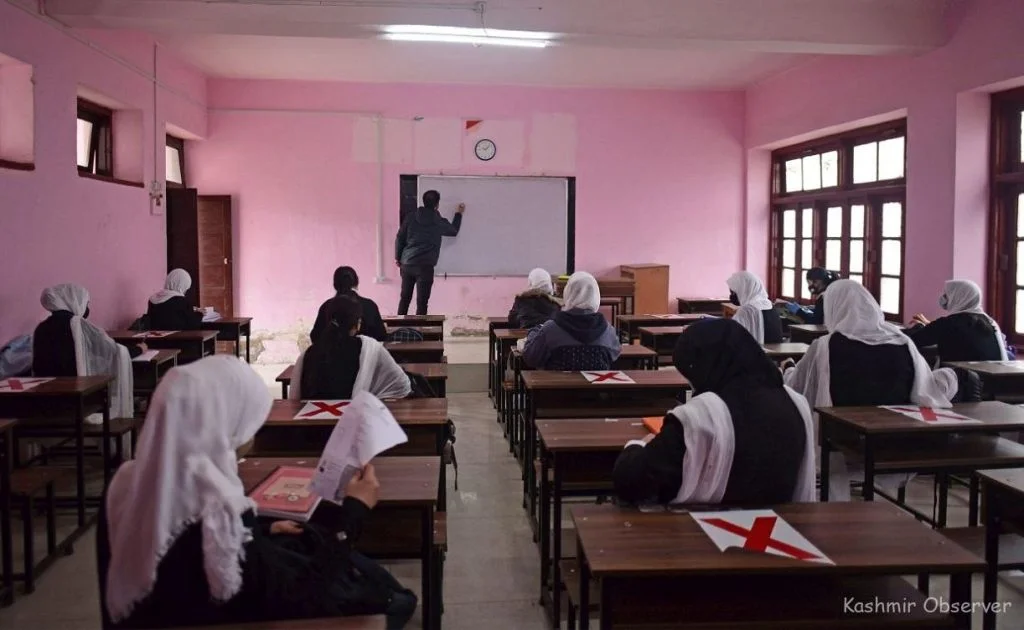
By Dr. Rizwan Rumi
Access to quality education is the cornerstone of societal progress, serving as the bedrock for individual growth and national development. Yet, despite strides in educational infrastructure, numerous government schools throughout the country struggle to provide basic amenities essential for effective learning. In Jammu and Kashmir, this challenge is particularly acute, echoing the urgent need for systemic reform to ensure that every child, regardless of socio-economic status, receives a robust educational foundation.
J&k’s educational landscape has witnessed commendable expansion, with the establishment of a vast network of government schools, representing a significant milestone in the nation’s pursuit of universal education. However, beneath this veneer of progress lie persistent issues plaguing these institutions. The dearth of fundamental facilities such as electricity, playgrounds, adequate classrooms, potable water, and sanitation facilities remains a pervasive obstacle, compromising the educational experience of millions of students.
Recent assessments paint a stark picture of the reality faced by many government schools, revealing a distressing lack of essential resources critical for fostering a conducive learning environment. Shockingly, nearly half of these institutions operate without access to electricity or recreational spaces, while the majority grapple with insufficient classrooms, basic amenities, and sanitation infrastructure. The resulting atmosphere stifles academic engagement and contributes to alarmingly high dropout rates, perpetuating a cycle of educational disenfranchisement.
At the heart of this crisis lies the acute shortage of qualified educators, a challenge exacerbated by inadequate professional development opportunities and reliance on temporary or untrained teaching staff. Despite offering competitive salaries compared to their private sector counterparts, government school teachers often face overwhelming workloads and minimal support, hindering their ability to deliver quality instruction effectively.
Furthermore, compliance with legislative mandates such as the Right to Education (RTE) Act remains a distant reality for many institutions, with only a fraction achieving full adherence to its provisions. Political interference and bureaucratic inefficiencies further impede progress, perpetuating systemic neglect and eroding public trust in government schools.
The ramifications of this educational divide are far-reaching, with parents increasingly turning to private alternatives in pursuit of quality education for their children. Regrettably, this trend exacerbates existing disparities, as economically disadvantaged families are left with limited choices, further entrenching societal inequities.
Amidst these challenges, however, promising initiatives offer glimpses of transformative potential. Programs like Nipun Bharat aim to address learning gaps through targeted interventions, while visionary leadership in many states and UTs underscores the importance of holistic reform encompassing infrastructure enhancement, teacher capacity building, community engagement, and curriculum innovation.
To chart a sustainable path forward, a multifaceted strategy is imperative. Prioritizing infrastructure development, including investments in digital infrastructure, is essential to meet the evolving needs of 21st-century learners. Concurrently, efforts to recruit and retain qualified educators, coupled with robust professional development initiatives, are paramount to bolstering instructional quality and student outcomes.
Furthermore, fostering collaborative partnerships among schools, educators and communities can facilitate tailored interventions to support marginalized students and bridge the digital divide. Equally crucial is the provision of basic amenities, such as electricity and sanitation facilities, to create safe and hygienic learning environments conducive to holistic development.
Ultimately, the transformation of government schools transcends mere policy imperatives; it embodies a collective commitment to equity, excellence, and social justice. By confronting systemic barriers head-on and prioritizing the educational needs of all children, we can forge a future where every learner has the opportunity to thrive and contribute meaningfully to society’s collective progress.
Views expressed in the article are the author’s own and do not necessarily represent the editorial stance of Kashmir Observer
- The Author is a freelancer, Writer and columnist. He can be mailed on rizwanroomi2012@gamil.com
Follow this link to join our WhatsApp group: Join Now
Be Part of Quality Journalism |
Quality journalism takes a lot of time, money and hard work to produce and despite all the hardships we still do it. Our reporters and editors are working overtime in Kashmir and beyond to cover what you care about, break big stories, and expose injustices that can change lives. Today more people are reading Kashmir Observer than ever, but only a handful are paying while advertising revenues are falling fast. |
| ACT NOW |
| MONTHLY | Rs 100 | |
| YEARLY | Rs 1000 | |
| LIFETIME | Rs 10000 | |











